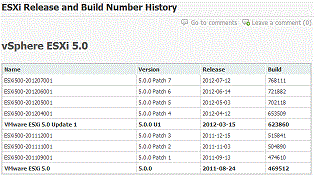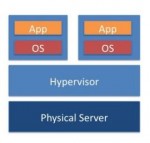I sat the VCAP5-DCA exam yesterday, also known as VDCA510. Actually taking the exam fulfills a journey I started on back in 2011 when I first registered for the vSphere 4 version of the exam. However, taking a new and busy job, plus life in general caused me to cancel and ultimately schedule the vSphere 5 version of the exam, and then reschedule it a half-dozen times.
By the time it finally rolled around, I was sick of studying and thinking about it and ready to just get it done and over with.
It was a good experience and I’m pretty sure I passed, and hopefully did pretty well. I tried the tactic of going through all the questions and writing down briefly what topic they were about, whether they were “administrative”, “configuration”, or “troubleshoot”. That was helpful to get an idea of what would be coming up as I moved through the exam, but ultimately I just started at question 1 and worked my way through the rest of them.
I was grateful to have the vSphere 5 PDFs available with Adobe Reader to search through them and am not ashamed to admit that I did refer to a few things in there, especially when it came to some PowerCLI stuff.
I believe I answered every question correctly and accurately, and only ended up skipping one due to time. I had circled it to come back and deal with later as it was not integral to future questions, but with 5 seconds remaining, I went ahead and clicked Finish, so oh well. I did managed to complete 2 that I had circled to return to, so that was satisfying.
The Pearson Vue site had nice 20-inch widescreen monitors, but unfortunately the PC or remote desktop was only configured to run in 4:3 so the resolution was something like 1280×1024 and could not take advantage of the widescreen monitor. This was annoying when I had many different windows up and was bouncing between things. My advice, minimize everything as soon as you’re done so you can easily call it back up from the rows of minimized windows at the bottom (no start bar). Much better than hunting through a bunch of open windows to find the one you need.
One other issue was that during one of the questions, I had to press a function key within a VM console, but none of the function keys seemed to work – as if Pearson or something had disabled them. Using F2 to try to rename a file in a remote desktop did not work either. I emailed the Certification team to share my experience so hopefully I will still get full credit for the question.
The resources that I relied on were:
- http://www.vexperienced.co.uk/2012/04/12/vcap5-dca-whats-new/
- two ESXi hosts and a vCenter server
- http://thefoglite.com/vcap-dca5-objective/
- http://www.valcolabs.com/vcap5-dca/
- http://thesaffageek.co.uk/vsphere-5-study-resources/vcap5-dca-objectives/
- http://www.vexperienced.co.uk/vcap-dca/
- http://www.seancrookston.com/vcap-dca/
Probably most helpful was my day to day vSphere administration that I do for various customers. However, as with any exam, there were questions on areas that I am just not too familiar with because my customers don’t use those pieces, so I did have to lab them up and play with them a bit.
What I liked about the exam was that I was free to accomplish the question in whichever manner I was most comfortable with, which was via the GUI. But some questions were specific to using the CLI, so those had to be done via that, and I was glad to have the documentation to refer to.
On to the VCAP5-DCD!

